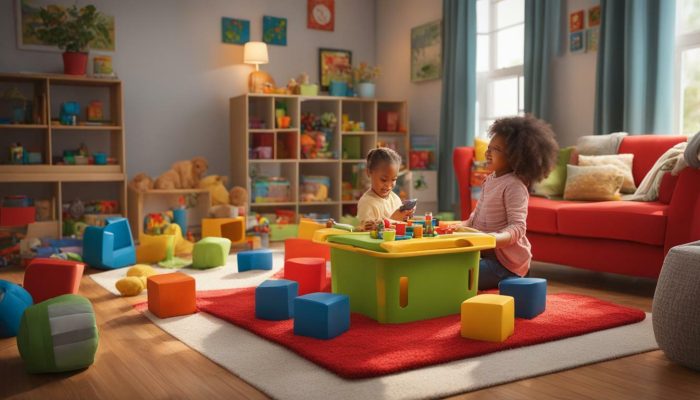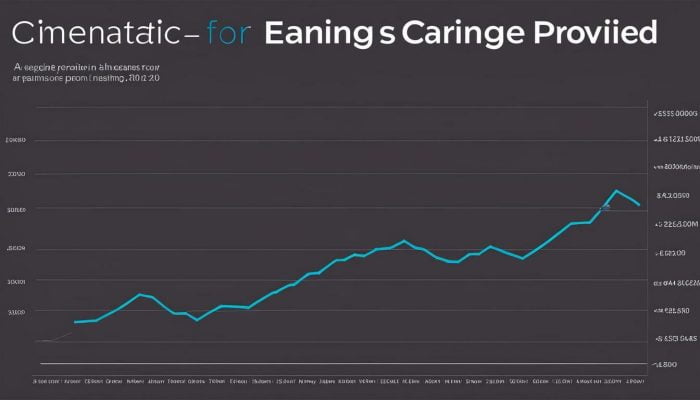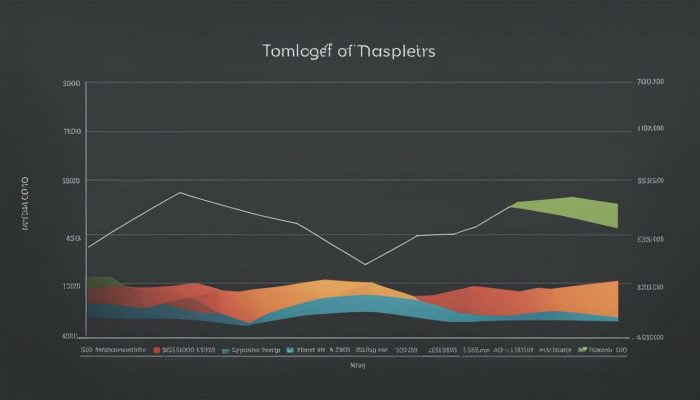How Much Do In Home Daycares Make
If you’re considering running a home daycare, it’s essential to understand how much you can expect to make. As a childcare provider, your earnings will depend on various factors such as the number of children in your care, their ages, and the rates you charge. In-home daycares typically charge around $10-15 per hour per child, with an average weekly rate of $200 per child. These rates can vary based on location and the specific services you offer.
On average, in-home daycare providers make around $32,161 per year. However, it’s important to note that this figure may vary based on factors such as the number of children in your care and the location of your facility. Providers in high-demand areas or with a larger number of children may have the potential to earn more.
There are several ways to increase your income as an in-home daycare provider. You can consider raising your rates, offering additional services such as tutoring or enrichment programs, or exploring opportunities for referral-based business. By finding ways to boost your earnings, you can make your home daycare more financially rewarding.

- In-home daycare providers typically charge around $10-15 per hour per child.
- The average annual salary for an in-home daycare provider is approximately $32,161.
- Earnings can vary based on factors such as location, number of children in care, and rates.
- Providers can increase their income by raising rates, offering additional services, and leveraging referrals.
- Running a home daycare can be a profitable venture, offering flexibility and the ability to create a safe, nurturing environment.
Factors Affecting In-Home Daycare Earnings
The earnings of an in-home daycare provider can vary depending on several factors. One of the key factors is the number of children in care. Providers typically charge an hourly rate per child, which can range from $10 to $15. The more children they have under their care, the higher their potential earnings. However, it’s important to ensure that the provider can effectively manage the increased workload and maintain quality care for each child.
Another factor that impacts earnings is the rates charged by the in-home daycare. Providers often set their own rates based on factors such as their level of experience, location, and the services they offer. It’s essential for providers to research and understand the prevailing rates in their area to remain competitive while also ensuring that their rates accurately reflect the quality of their services.
In addition to the number of children and rates, the location of the in-home daycare can also significantly impact earnings. Providers in areas with high demand and limited competition may have the opportunity to charge higher rates and potentially earn more. Conversely, providers in areas with lower demand or higher competition may need to adjust their rates accordingly to attract clients while still maintaining profitability.
| Factors | Impact on Earnings |
|---|---|
| Number of children | Increase in earnings with each additional child, but ensure quality care for all children |
| Rates charged | Higher rates can lead to increased earnings, but should align with market standards and quality of services |
| Location | Areas with high demand and limited competition can lead to higher rates and potentially higher earnings |
Ultimately, the earnings of an in-home daycare provider are influenced by the number of children in care, the rates charged, and the location. Providers can maximize their earnings by carefully managing these factors while always prioritizing the quality of care provided to the children.

On average, in-home daycare providers make a salary of around $32,161 per year. This figure can vary depending on factors such as the provider’s location, experience, and the number of children in their care. In-home daycares charge an average of $200 per week per child, which can contribute significantly to their earnings. By providing quality care and establishing a positive reputation, providers have the potential to increase their income over time.

Location is an important factor when considering the earnings of in-home daycares. Providers in urban areas or regions with a high demand for childcare may be able to charge higher rates, resulting in higher earnings. On the other hand, providers in rural areas or locations with lower demand may need to adjust their rates accordingly.
Furthermore, the number of children in care can impact earnings. While taking care of more children can lead to higher income, it also requires more time and effort from the provider. Balancing the workload and ensuring the quality of care is maintained is crucial for success.
| Factors Affecting In-Home Daycare Earnings | Impact on Earnings |
|---|---|
| Number of children | More children can lead to higher income, but also requires more time and effort |
| Rates | Setting competitive rates that reflect the quality of care provided |
| Location | Providers in high-demand areas may be able to charge higher rates |
To increase their income, in-home daycare providers can consider strategies such as increasing their rates, offering additional services, and getting referrals. By continually improving their skills and staying informed about the latest trends in childcare, providers can enhance their earning potential and ensure the success of their home daycare business.
Increasing Income as an In-Home Daycare Provider
In-home daycare providers can take several steps to boost their income and generate a good amount of revenue. One strategy is to increase rates. Providers can analyze their operating costs, such as food, supplies, and utilities, and adjust their rates accordingly. It’s important to research the local childcare market to ensure that rates are competitive while still reflecting the quality of care provided.
Offering additional services can also help increase income. Providers can consider extras such as providing meals or snacks, offering transportation services, or organizing educational activities. These additional services not only add value for parents but also provide an opportunity to generate more revenue.

Another effective way to boost income is through referrals. Satisfied parents can be a valuable source of new business. Providers can encourage parents to refer their friends and family members by offering incentives such as discounts or a free day of care. Creating a referral program can help generate a steady stream of new clients and increase income over time.
By implementing these strategies, in-home daycare providers can successfully boost their income and maximize their earning potential. It’s important to constantly evaluate and adjust these strategies to meet the needs of both the provider and the families they serve.
The Profitability of Running a Home Daycare
Running a home daycare can be a profitable venture that offers flexibility and the opportunity to create a safe and nurturing space for children. In-home daycare providers can expect to earn an average of $10-15 per hour per child, depending on factors such as the number of children, their ages, and the rates charged. The average rate for in-home daycares is around $200 per week per child, resulting in an average annual income of $32,161 for providers.
Location and the number of children in care can also impact earnings. Home daycare providers in areas with higher living costs or in regions with a high demand for childcare services may be able to charge higher rates and, therefore, earn a higher income. Similarly, providers who care for a larger number of children may see an increase in their earnings. It’s important to consider these factors when determining the profitability of a home daycare.
To increase income as an in-home daycare provider, there are several strategies that can be implemented. Providers can consider raising their rates, offering additional services such as meal plans or transportation, and actively seeking referrals from satisfied parents. These methods can help boost revenue and contribute to the overall profitability of running a home daycare.
| Factors Affecting Daycare Profitability | Additional Revenue Strategies |
|---|---|
| Business size | Raising rates |
| Location | Offering additional services |
| Rates charged | Seeking referrals |
Owning a daycare not only provides financial benefits but also allows for the creation of a safe and nurturing environment for children. By operating out of a home, daycare providers can offer personalized care and attention, creating a comfortable and familiar setting for children to thrive. This aspect, combined with the potential for profitability, makes running a home daycare an attractive option for individuals passionate about early childhood education.

Important Considerations for Starting a Home Daycare
Before starting a home daycare, it’s crucial to understand the local regulations, estimate costs, and create a comprehensive business plan. Compliance with local regulations is essential to ensure the safety and well-being of the children in your care. Research and familiarize yourself with the licensing requirements, zoning restrictions, and health and safety guidelines specific to your area. Adhering to these regulations will not only protect the children but also safeguard your business from potential legal issues.
Estimating costs accurately is another vital aspect of starting a home daycare. Consider expenses such as insurance, supplies, equipment, food, and marketing. Additionally, factor in rent or mortgage payments, utilities, and any remodeling or modifications required to create a suitable and child-friendly environment. By thoroughly assessing your expenses, you can determine reasonable rates to charge parents while ensuring profitability for your business.
A comprehensive business plan is key to the success of your home daycare. It will serve as a roadmap, outlining your goals, target market, marketing strategies, pricing structure, operational procedures, and financial projections. Your business plan should also include contingency plans for emergencies and growth strategies for expanding your services in the future. Creating a well-thought-out plan will not only help you stay organized but also provide a clear direction for your business.

Starting a home daycare can be a fulfilling and profitable venture. By understanding the local regulations, estimating costs accurately, and creating a comprehensive business plan, you can set yourself up for success. Remember to prioritize the safety and well-being of the children in your care, and strive to provide a nurturing environment that fosters their growth and development. With careful planning and dedication, you can establish a thriving home daycare business that positively impacts the lives of children and their families.
Qualifications and Requirements for In-Home Childcare Providers
In-home childcare providers need to meet certain qualifications and have the necessary knowledge and skills to provide quality care. One of the key qualifications is obtaining early childhood education certification. This certification ensures that providers have received proper training in child development, age-appropriate activities, and creating a nurturing environment.
Experience is also important for in-home childcare providers. Having hands-on experience working with children can help providers understand their needs and provide appropriate care. It allows providers to develop effective communication and problem-solving skills, which are essential when working with young children.
Knowledge of safety measures is crucial to ensure the well-being of children in an in-home daycare setting. Providers must be familiar with safety protocols, such as childproofing the space, administering first aid, and implementing emergency preparedness plans.
Key Qualifications for In-Home Childcare Providers:
- Early childhood education certification
- Experience working with children
- Knowledge of safety measures
- Ability to provide age-appropriate activities
Creating a stimulating and engaging environment for children requires the ability to provide age-appropriate activities. In-home childcare providers should have a good understanding of child development and be able to tailor activities to meet the needs of each child in their care. Age-appropriate activities can promote learning, enhance cognitive and physical development, and foster creativity.
Overall, in-home childcare providers must possess the necessary qualifications, knowledge, and skills to provide a safe and nurturing environment for children. With the right qualifications, providers can ensure that children receive the care, education, and support they need during their crucial early years.

| Qualifications | Experience | Safety Measures | Age-Appropriate Activities |
|---|---|---|---|
| Early childhood education certification | Hands-on experience working with children | Knowledge of safety protocols | Ability to provide stimulating activities |
| Ensures providers have received proper training in child development | Enables effective communication and problem-solving skills | Ensures the well-being of children | Promotes learning and enhances cognitive and physical development |
Protecting Your In-Home Daycare Business
Protecting your in-home daycare business involves taking proactive measures such as staff training, implementing safety protocols, and considering insurance options. As a childcare provider, ensuring the safety and well-being of the children in your care is of utmost importance, and these measures are crucial in creating a secure environment.
Staff training is essential for equipping your team with the necessary knowledge and skills to handle various situations that may arise in a daycare setting. Providing staff members with adequate training in areas such as first aid and CPR, child development, and behavior management can help them respond effectively to emergencies and ensure the overall safety of the children.
| Staff Training | Safety Measures | Insurance |
|---|---|---|
| First aid and CPR | Secure premises | Liability insurance |
| Child development | Emergency preparedness | Property insurance |
| Behavior management | Supervision protocols | Business interruption insurance |
Implementing safety protocols is another crucial aspect of protecting your in-home daycare business. This includes securing your premises to prevent unauthorized access, creating emergency preparedness plans, and maintaining appropriate supervision protocols. By prioritizing safety, you provide reassurance to parents and build trust in your daycare services.
Considering insurance options is essential for safeguarding your business against unforeseen circumstances. Liability insurance can protect you in the event of accidents or injuries that may occur while children are under your care. Property insurance can cover damage to your premises or equipment, while business interruption insurance can provide financial support in case of unexpected disruptions to your daycare operations.
Remember, protecting your in-home daycare business is not just about ensuring the safety and well-being of the children but also safeguarding your own interests. By investing in staff training, implementing safety measures, and considering insurance options, you can create a secure and thriving environment for your daycare business.
Factors Affecting Daycare Profitability
The profitability of owning a daycare can be influenced by factors such as the size of the business, its location, and the rates charged. These factors play a crucial role in determining the financial success of an in-home daycare. Let’s delve deeper into each of these factors and understand how they impact the overall profitability.
Business Size
The size of the daycare business directly affects its profitability. A larger daycare with more available spots for children can generate higher revenue. It allows for a higher number of enrolled children, which translates into increased earnings. Additionally, a larger business may benefit from economies of scale, such as shared expenses and reduced overhead costs per child. However, managing a larger daycare may also require more staff and resources, impacting the overall expenses.
Location
The location of an in-home daycare can significantly influence its profitability. Daycare centers situated in areas with high demand for childcare services, such as urban neighborhoods or near corporate offices, are more likely to attract a larger customer base. A convenient location that is easily accessible for parents can also be a determining factor in choosing a daycare. Furthermore, the local economy and demographic trends of the area can impact the ability to charge higher rates and maintain a consistent clientele.
Rates
The rates charged by an in-home daycare are crucial in determining its profitability. Setting competitive rates that align with the local market while considering the quality of services provided is essential. Providers need to consider factors such as the cost of supplies, staff wages, insurance, and overhead expenses when determining their rates. Additionally, understanding the pricing strategies of competitors in the area can help in setting rates that are both attractive to parents and sustainable for the business.
By carefully considering these factors, in-home daycare providers can optimize the profitability of their business. Analyzing the local market, understanding the financial implications of business size, location, and rates, and making informed decisions can pave the way for a successful and financially rewarding daycare venture.

Owning a daycare can be a profitable venture, and there are potential grants and stipends available to support daycare owners. In-home daycare providers can expect to make around $10-15 per hour per child, depending on factors such as the number of children, their ages, and rates charged. With an average weekly rate of $200 per child, providers can generate an average annual income of $32,161.
Factors like the location of the daycare and the number of children in care can influence earnings. However, there are several strategies that daycare owners can implement to boost their income. Increasing rates, offering additional services such as educational programs or specialized care, and actively seeking referrals can all contribute to a higher earning potential.
Running a home daycare not only offers the possibility of financial success but also allows for flexibility and the creation of a safe and nurturing environment for children. It is essential to thoroughly research and understand local regulations to ensure compliance. Additionally, estimating costs accurately and developing a comprehensive business plan are crucial steps in establishing a successful daycare.
| Key Considerations for Starting a Home Daycare | Summary |
|---|---|
| Local Regulations | Understand and comply with licensing and certification requirements set by local authorities. |
| Costs | Estimate expenses for equipment, supplies, insurance, and marketing to determine the financial viability of the daycare. |
| Business Plan | Create a detailed plan outlining the services offered, target market, marketing strategies, and financial projections. |
Qualifications for in-home childcare providers include early childhood education certification, experience, and knowledge of safety measures and age-appropriate activities. Adhering to staff training protocols and implementing stringent safety measures within the daycare environment are essential for protecting the business and ensuring the well-being of the children under care.
The profitability of a daycare is influenced by various factors, including the size of the business, location, and rates charged. A well-run daycare with a reputable reputation and a strategic location can attract a steady stream of clients, resulting in increased profitability. By maintaining competitive rates and continuously evaluating and improving services, daycare owners can maximize their earning potential.
Grants and Stipends for Daycare Owners
Daycare owners can explore potential grants and stipends available to support their business. Local, state, and federal government agencies often provide funding opportunities to promote access to quality childcare. Additionally, nonprofit organizations, private foundations, and community initiatives may offer financial assistance or scholarships for daycare owners and providers.
It is recommended that daycare owners research and apply for grants that align with their specific business needs and goals. These grants can provide additional financial support for equipment, educational resources, staff development, or facility improvements. By leveraging these available resources, daycare owners can further enhance their profitability and the quality of care they provide.
FAQ
Q: How much do in-home daycares make in 2023?
A: The average annual salary for a home daycare provider can vary depending on several factors such as location, number of children, and rates charged. While it is difficult to predict the exact amount, running a home daycare can be a profitable venture if managed effectively.
Q: What are the startup costs for a home daycare?
A: The startup costs for a home daycare can vary depending on various factors such as licensing fees, safety equipment, toys, furniture, and marketing expenses. It is essential to consider all these costs before starting your home daycare business.
Q: How many children can a licensed daycare provider care for in their home?
A: The number of children a licensed daycare provider can care for in their home depends on the regulations of the child care and early years act in your location. It is important to ensure compliance with these regulations to maintain the quality and safety of care provided.
Q: How much can you make as a home daycare provider?
A: The salary of a home daycare provider can vary depending on factors such as location, rates charged, and the number of children enrolled. By offering quality care and managing expenses effectively, you can make a profit and have a successful home daycare business.
Q: What are the things to consider before starting a home daycare?
A: Before starting a home daycare, it is crucial to consider factors such as local regulations, licensing requirements, safety measures, insurance, and market demand for child care services. Understanding these aspects will help you establish a successful and legally compliant home daycare.
Q: How much does it cost to open a home daycare?
A: The costs of opening a home daycare can vary depending on factors like licensing fees, safety requirements, marketing expenses, and supplies. It is important to research and budget for these costs to ensure a smooth startup process.
Q: How can I make my home daycare profitable?
A: To make your home daycare profitable, it is essential to manage expenses effectively, offer competitive rates, provide quality care, and maintain a positive reputation. By attracting and retaining clients, you can increase your income and make your home daycare a profitable venture.
Q: What is the average annual salary of a home daycare provider?
A: The average annual salary of a home daycare provider varies depending on factors such as location, rates charged, and number of children enrolled. It is recommended to research the market rates in your area and adjust your pricing accordingly.
Q: What are the regulations that licensed childcare providers need to follow?
A: Licensed childcare providers need to follow regulations outlined by local governing bodies such as the child care and early years act. These regulations cover areas such as health and safety standards, staff-to-child ratios, educational requirements, and record-keeping.
Q: How to start a home daycare?
A: To start a home daycare, you generally need to obtain a business license, complete any required training or certifications, ensure compliance with local regulations, create a safe and stimulating environment, and develop policies and procedures for running your daycare.
Conclusion How Much Do In Home Daycares Make
in home daycares can be a financially rewarding business venture, offering a flexible schedule and the opportunity to create a nurturing environment for children. With an average earning potential of $10-15 per hour per child, in-home daycares provide caregivers with the ability to earn a respectable income while doing meaningful work.
Factors such as the number of children, their ages, and the rates charged can impact the overall earnings of an in-home daycare. Providers charge an average of $200 per week per child, resulting in an average annual salary of $32,161. Location also plays a role in determining earnings, with higher rates often found in more affluent areas.
To boost income, in-home daycare providers can consider increasing their rates, offering additional services like educational programs or specialized care, and actively seeking referrals from satisfied parents. These strategies can help maximize earnings and attract more clients to the daycare.
Running a home daycare not only offers financial benefits but also provides the flexibility to create a safe and nurturing environment for children. Providers have the opportunity to establish a close bond with each child and tailor their care to meet individual needs. However, it’s essential to understand local regulations, estimate costs accurately, and create a solid business plan to ensure success.
Qualifications for in-home childcare providers include early childhood education certification, experience, and knowledge of safety measures and age-appropriate activities. It’s crucial to invest in staff training, follow safety guidelines, and consider insurance to protect the business and provide peace of mind to parents.
The profitability of owning a daycare depends on various factors such as the size of the business, its location, and the rates charged. By carefully considering these factors and implementing effective business strategies, daycare owners can create a profitable venture that not only benefits their financial well-being but also contributes to the overall development and growth of the children in their care.
Furthermore, potential grants and stipends are available to support daycare owners, providing additional opportunities for financial growth and sustainability. These resources can help offset costs, expand services, and enhance the overall profitability of the daycare.
Overall, owning an in-home daycare can be a rewarding and financially viable career choice. By understanding the factors that affect earnings, taking steps to increase income, and staying informed about industry trends and resources, in-home daycare providers can enjoy a successful and fulfilling business that positively impacts the lives of children and families in their community.